Creating a sense of motion through still image
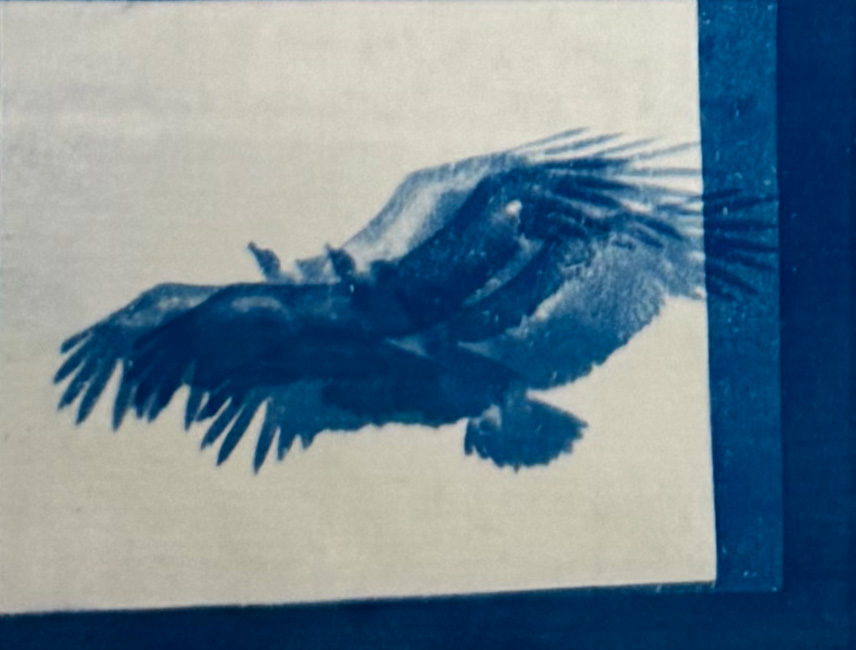
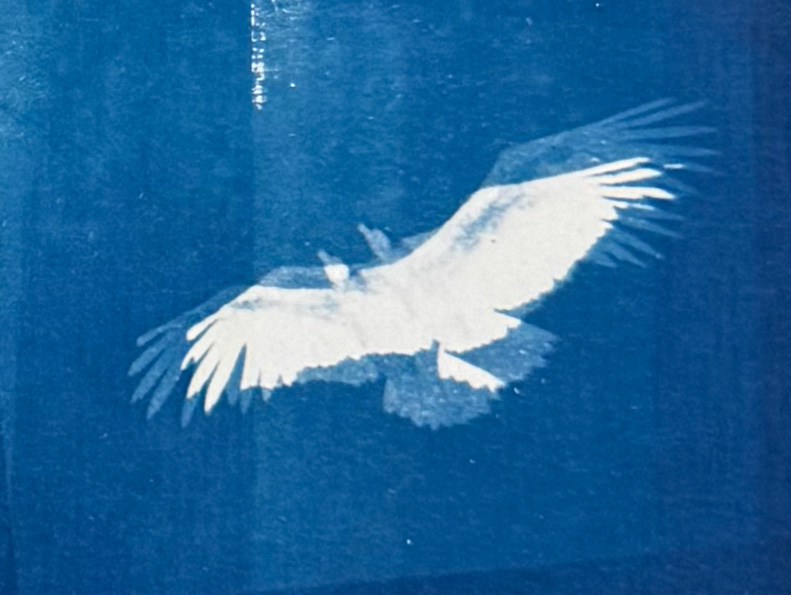
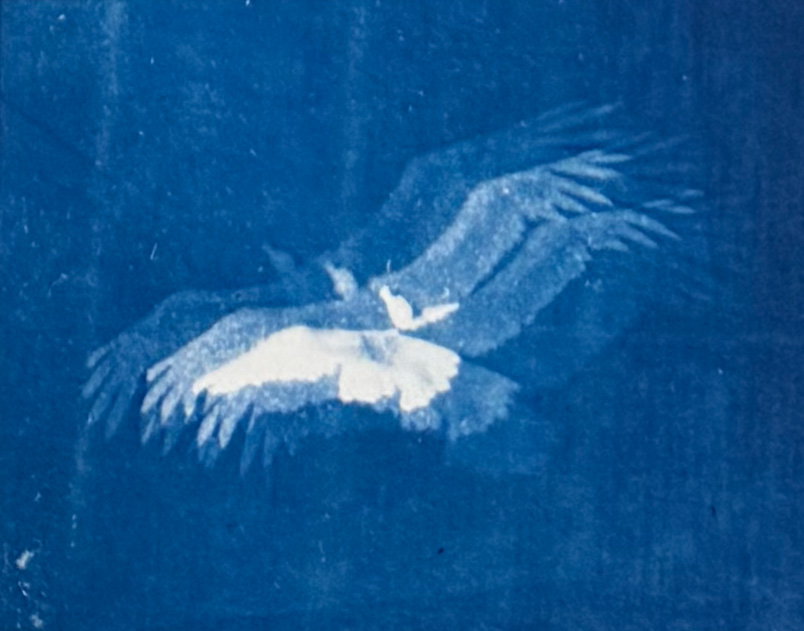



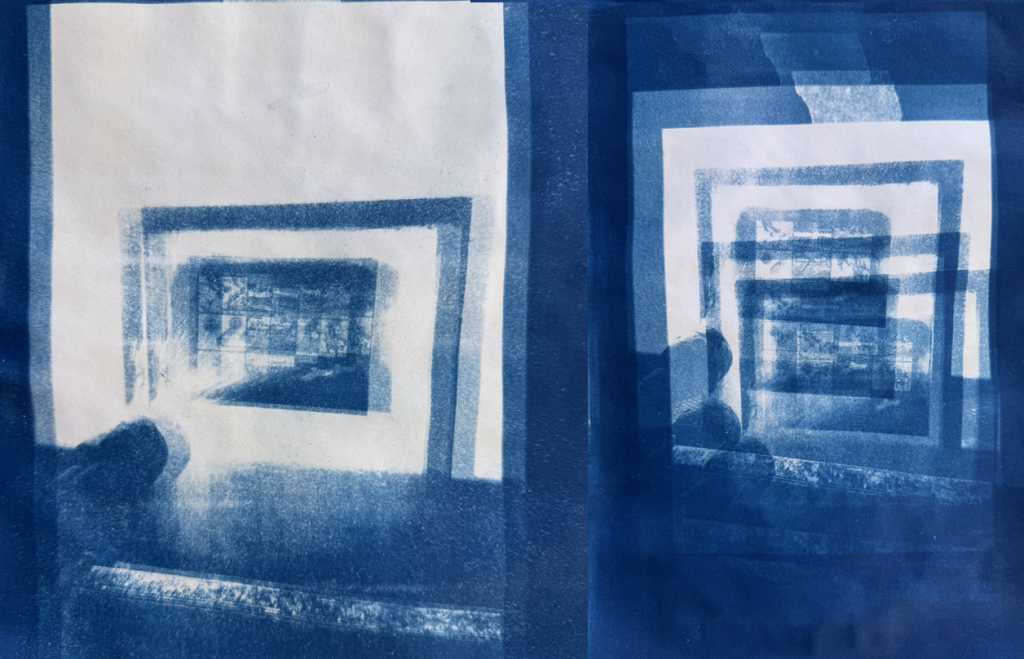
peer feedback
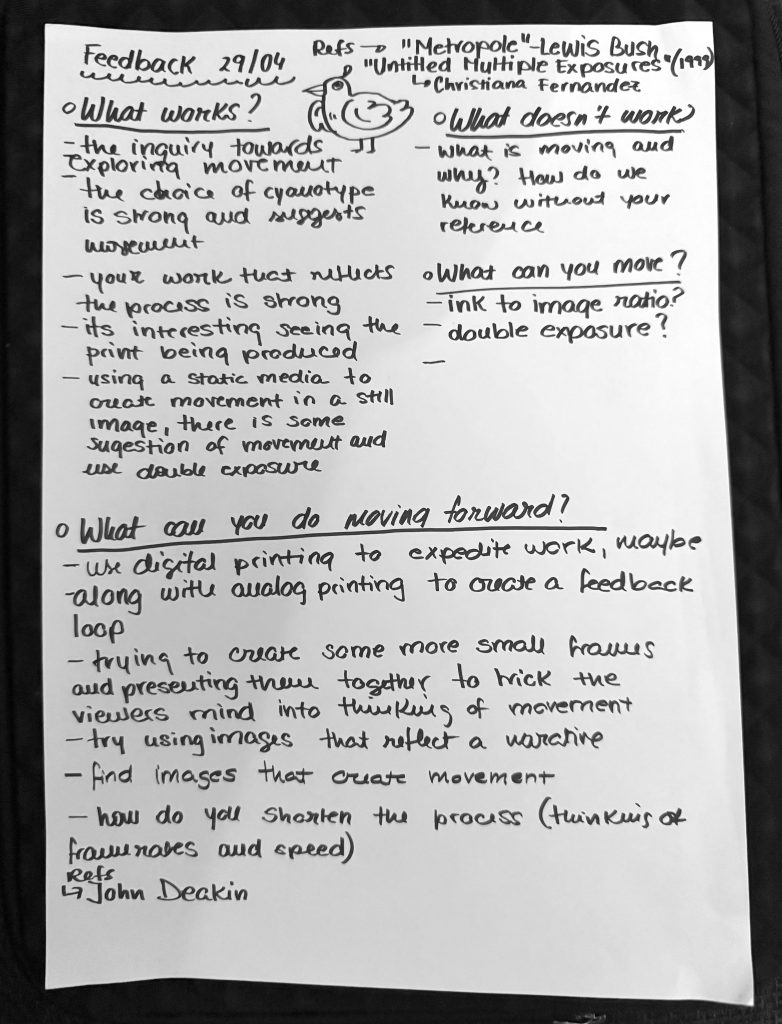
Written response
My line of enquiry
In this project, I am exploring how to “hack” a medium or tool by using it in ways it’s not intended. A recurring theme across my practice is the interplay between analogue and digital processes. For this brief I continued my investigation into cyanotype – a static, analogue UV printing method – by challenging its limitations and exploring how it might create a sense of movement. My central question is: how can still imagery suggest motion without relying on digital intervention?
Initially, I digitally put together cyanotype prints to create an animation. I then became more interested in how movement could be generated only through analogue processes. I experimented with overlapping exposures by shifting the subject/photos during exposure, capturing the traces of motion in a single print. I also explored sequencing the printed stills into timelines, allowing the viewer’s eye to perceive motion as it moves along the stills. By exploring these analogue strategies I want to push the boundaries of cyanotype as a static medium which aligns with my wider inquiry of using tools unconventionally whilst also blurring the lines between handmade and digital.
Annotated bibliography
Adhocism
Jencks, C. and Silver, N., 2013. Adhocism: The Case for Improvisation. [1972] Cambridge, MA: The MIT Press. pp.38–53
In Adhocism: The Case for Improvisation, Jencks and Silver explore how repurposing materials and tools outside the original intention can be a creative strategy, not just a practical fix. They frame adhocism as a spontaneous, instinctive approach that values innovation and being spontaneous over conventional or fixed outcomes. This perspective helps me think differently about what it means to “hack” a medium, seeing it not as breaking a rule, but as a valid and meaningful method of experimentation. Their emphasis on working with what’s available aligns closely with my interest in challenging the expected use of processes like cyanotype and pushing its limitations. Rather than treating limitations as obstacles, Adhocism highlights how they can become the source of new ideas and creativity. The book reinforces my inquiry of bending or misusing a tool which can lead to unexpected results, and supports my exploration of analogue processes as a way to push traditional boundaries and rethink how we use materials.
The Medium is the Massage
McLuhan, M. and Fiore, Q., 2001. The Medium is the Massage: An Inventory of Effects. [1967] Berkeley, CA: Gingko Press
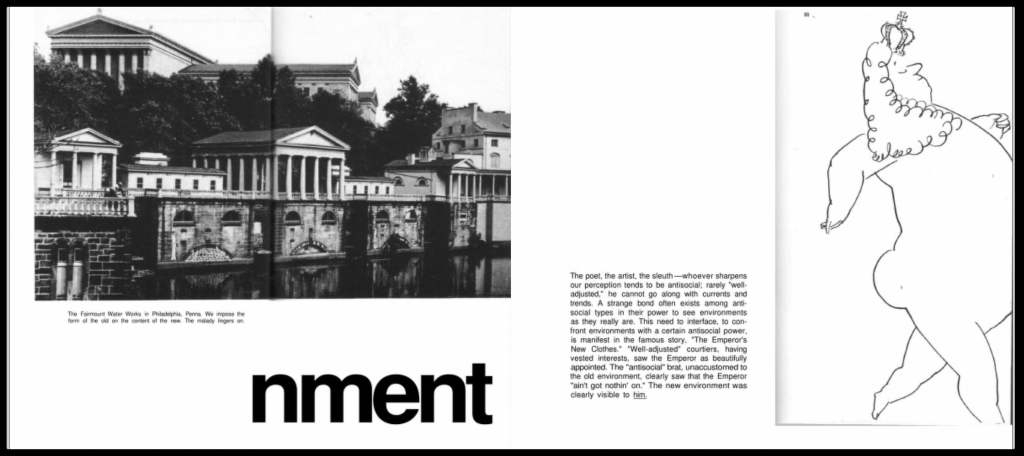
McLuhan and Fiore’s The Medium is the Massage helps me think about how the tools we use shape not just how we work, but what we’re able to communicate. The idea that “the medium is the message” feels relevant to my project, where I’m choosing to explore movement in a static medium rather than one designed for motion and I’m interested in what happens when I work against what cyanotype is typically used for. The book’s visual layout also connects to my work: it plays with sequence and fragmentation to create a sense of movement across the page. This highlights that meaning doesn’t only come from content – it also comes from the medium and how the viewer interacts with the work.
Metropole
Bush, L., 2018. Metropole (2014–2018). London: Overlapse Books
Available at: https://www.lewisbush.com/category/metropole/
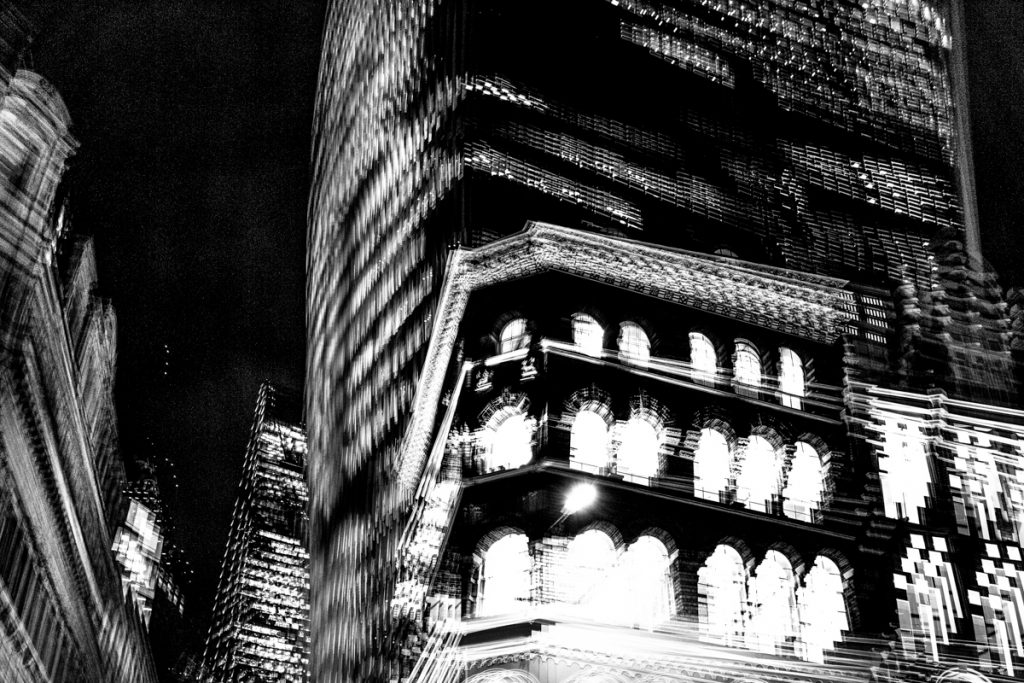
Lewis Bush’s Metropole informs my practice by demonstrating how photographic techniques, particularly multiple exposure, can be used to disrupt and deepen the reading of a still image. While Bush’s focus is on the political and spatial disorientation caused by urban development, his use of layering challenges the conventions of documentary photography and produces a visual language that shows movement, fragmentation, and instability. This visual approach resonates with my own inquiry. His method of collapsing time and space into a single frame encourages me to think critically about how photographic processes can be manipulated. Although our subjects and themes differ, his work supports my exploration of cyanotype as a static medium reimagined to suggest movement.
Edd Carr
Edd Carr’s cyanotype-based animation offers a strong reference point for how analogue processes can create movement. This project is what initially inspired me to work with cyanotype and moving image – I was fascinated by Carr’s play between analogue and digital work. Carr’s method, printing each frame of a video as a cyanotype and putting them back together as an animation, explores the work between the handmade and the digital. Something that stands out is how Carr uses the limitations of cyanotype (its slowness, unpredictability, and texture) as part of the aesthetic, rather than a barrier, highlighting the handmade aspect. Even though the final piece is digital, the process itself is a rigorous act of translation: motion becomes stillness, and stillness becomes motion again just like digital becomes analogue and then digital again. While I’m focusing on keeping my outcomes purely analogue, Carr’s approach shows how movement doesn’t only belong to digital tools which I was very inspired by.
Eadweard Muybridge
Muybridge, E., 1878. The Horse in Motion. [photograph]
https://en.wikipedia.org/wiki/Eadweard_Muybridge
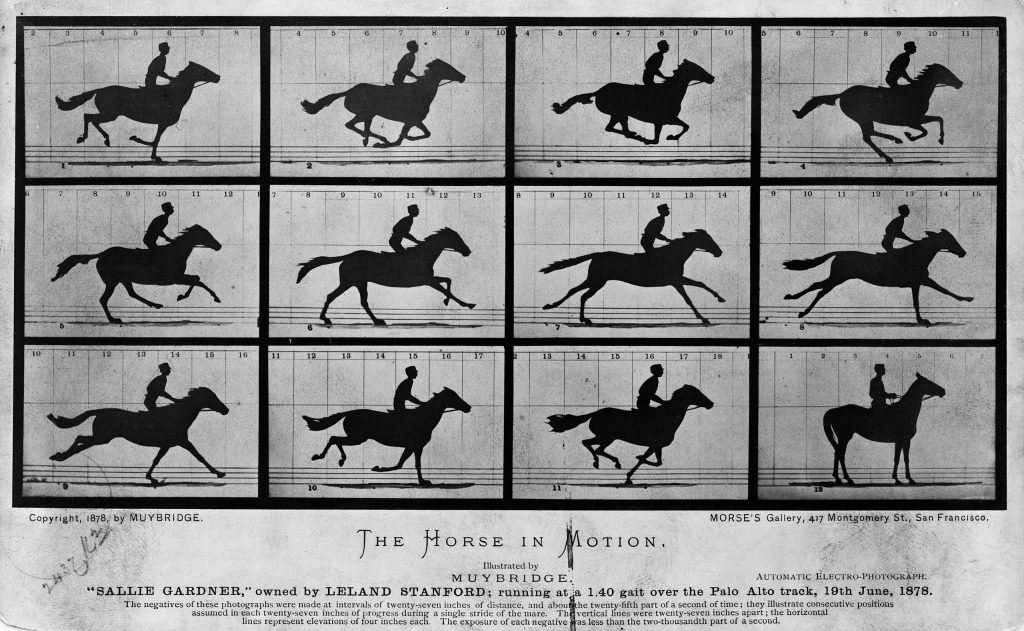
Eadweard Muybridge’s photographic studies of motion add the historical aspect to my investigation into how still imagery can evoke a sense of movement. By breaking down motion into photographic frames, Muybridge revealed the unseen mechanics of the human and animal body in motion, transforming movement into a series of static moments. His work demonstrates that motion can be perceived through arranging frames in a sequence and creating a visual rhythm. This directly relates to my use of cyanotype and positioning of prints, to suggest motion without digital animation. Like Muybridge, I am interested in how the eye sees successive still images to construct an illusion of movement. Muybridge’s work validates the potential of still photography to communicate movement and encourages me to continue challenging the limitations of analogue image-making.
Untitled Multiple Exposures: Echoes of the past
Fernandez, C., 1999. Untitled Multiple Exposure #4 (Bravo). [gelatin silver print] From the series Untitled Multiple Exposures. Los Angeles: Gallery Luisotti
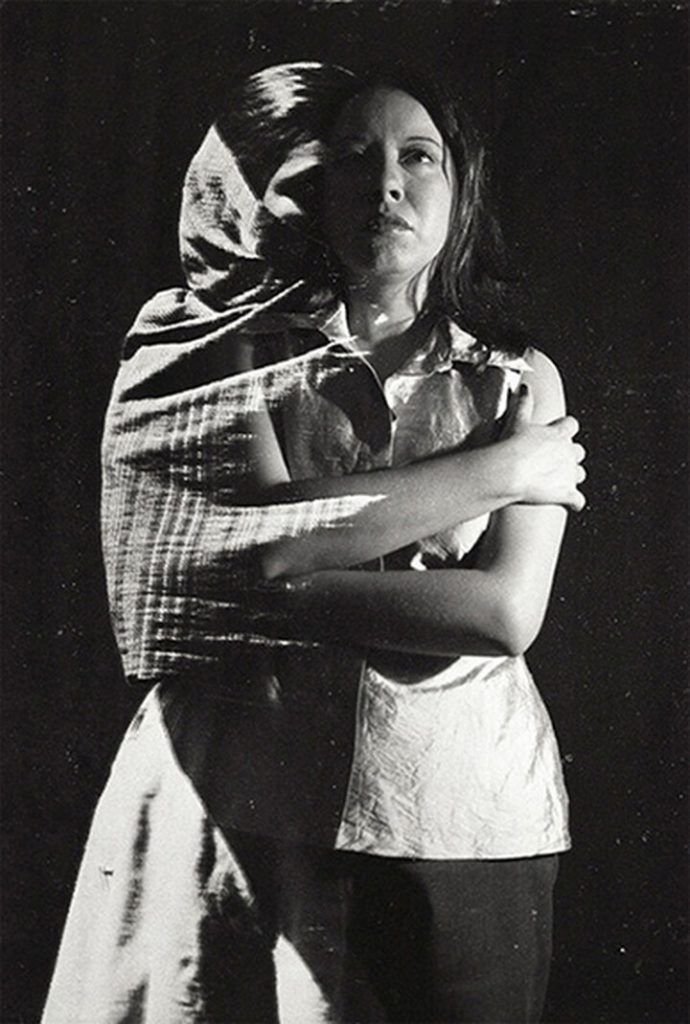
Christina Fernandez’s Untitled Multiple Exposures contributes to my exploration of how layering and overlapping in photography can suggest more complex narratives. By using multiple exposures to blend her own self-portraits with images of Indigenous women, Fernandez creates a sense of historical dialogue that transcends the static nature of the photograph. Fernandez’s work resonates with my interest in how visual distortion, achieved through overlapping imagery, can communicate many layers of understanding. The “embrace and separation” she addresses in her practice could also be related to my own questioning of how we can “embrace” a medium’s history and limitations while simultaneously pushing its boundaries. By incorporating both personal and historical narratives into her layered photographs, Fernandez challenges the viewer to engage with multiple meanings within a single image, inspiring me to deep down further into the potential of still images to convey deep, layered experiences.